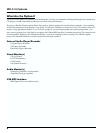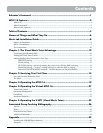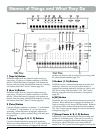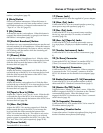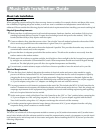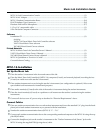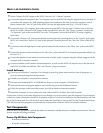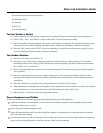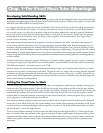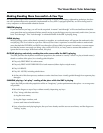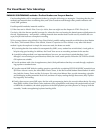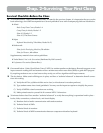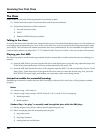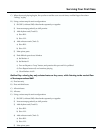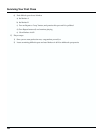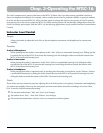
Developing Solid Reading Skills
To pass a school’s piano proficiency exam, one typically needs to play the Star-Spangled Banner, demonstrate basic har-
monization and improvisation skills, and perform two-handed keyboard pieces. All these tasks require two basic skills:
READING and RESPONDING accurately, in time.
It is suggested that development of eye-hand coordination is the critical skill in basic keyboard reading, and today has
been made achievable like never before. At a student’s first glance at a music score, the eyes can and should be guid-
ed—visually tutored—to follow the score and the fingers be trained to rhythmically, accurately respond. Whether the
music score is treble or bass staff only, the full grand staff or a lead sheet, it is the eyes that should lead. This guiding
and pacing of the eyes will almost “force” the timely visual recognition of notes and patterns. Then fingers will be
coaxed to follow accurately and in time.
Two computer-age developments are now applied exclusively in Roland’s new MTLC-16 to achieve this improved
music reading, from the first lesson onward to the development of good reading habits. Both developments are com-
monplace computer technologies: the Standard MIDI File (SMF) and a Visual Music Tutor. The first, an SMF or digital
music recording, allows the student to pace the reading/learning at any suitable tempo. The second, the V-MT, extends
that flexibility by displaying the digital music so the eyes are compelled to follow along, again at the computer-guided
tempo. This practical monitoring of eye-hand coordination eliminates common reading problems, instilling proficient,
accurate reading.
A failsafe visual tutor is important, since the challenge for a keyboard student, whether, private or group, is a complex,
recurring four-step process. First the EYE must sense the pattern; second, the BRAIN must make sense of it; third, the
FINGERS must respond—and fourth, must do so IN TIME.
Research into the eye movements of keyboard players has detected many ways to monitor and train the eyes: a tachis-
toscope, a moving mask, a pointed finger, and others. The goal of each is to “nudge” the eyes along. Smooth, regulated
movements are the goal, pacing the eye movement from left to right, measure-by-measure, “scrolling” downward one
staff at a time. Fluent sightreaders typically avoid uncontrolled eye movements, particularly movements shifting back-
ward, and concentrate on looking ahead.
Putting the Visual Tutor to Work
From the first glance of the music, the SMF and Visual Tutor work together to guide the eyes, whether a concept piece,
exercise or tune. The process in short: 1) Play the SMF slowly enough so the student can follow, the first time without
accompaniment tracks. 2) As skill improves, play the SMF with rhythm. 3) Finally, with increased skill and accuracy, the
student adds the orchestra. Of course, the student could be following along in the score, but following the on-screen
notation adds two important elements: a bouncing ball and colored note heads to attract and guide the eye, and auto-
matic “page turns” to allow the students to read ahead.
This visual eye training displays an entire score and is available with the Notation Screen (function key F2), Rehearsal
Screen (F3) or Tone/Mixer Panel (F4). This visual coaching is also suitable when practicing with Markers A & B. A prac-
tice loop can help a student painstakingly polish a segment, over and over. The visual reinforcement helps focus both
the reading task, as well as the finger pattern.
There are several options that help visually reinforce the SMF being heard through the MTLC-16. The actual note dis-
play is re-sizable so the class can focus on the segment being read. Another option notates all sharps and flats in color—
a practical reminder of those easily-overlooked first sharps and flats that occur in keys of G and F major. All in all, the
flexible visual guide in Roland’s Music Tutor is a landmark in developing strong reading skills in a group keyboard
instruction.
Chap. 1–The Visual Music Tutor Advantage
12



